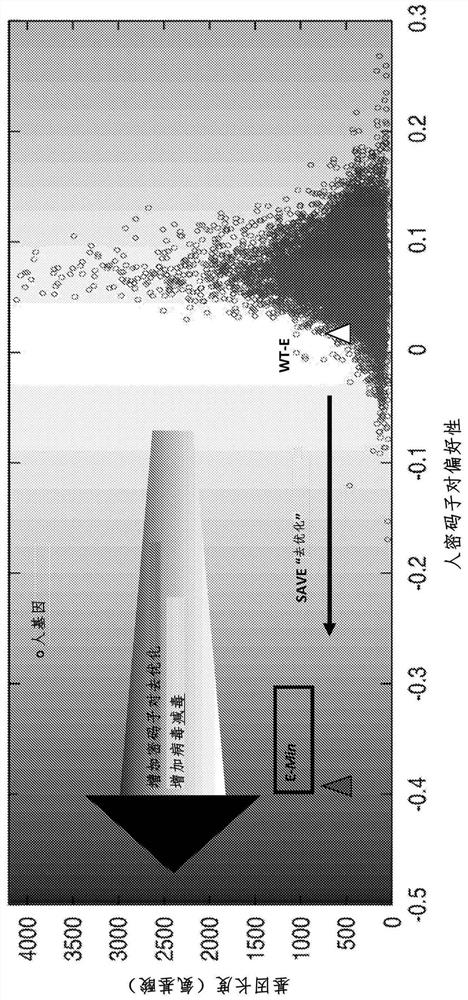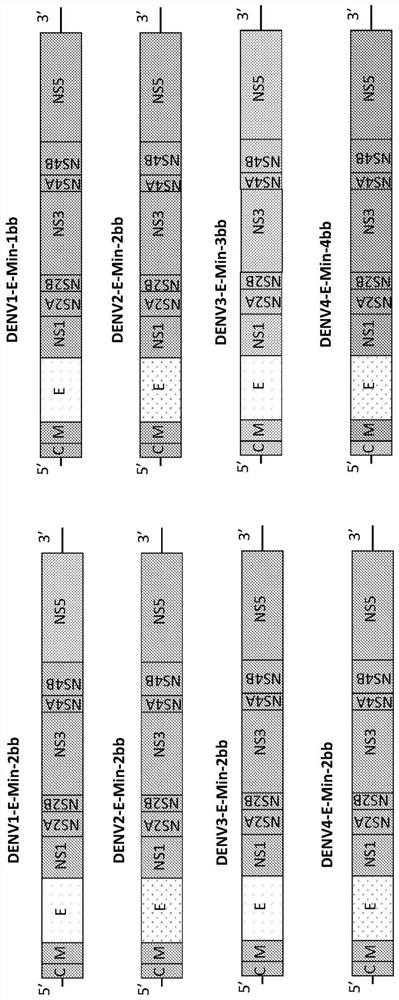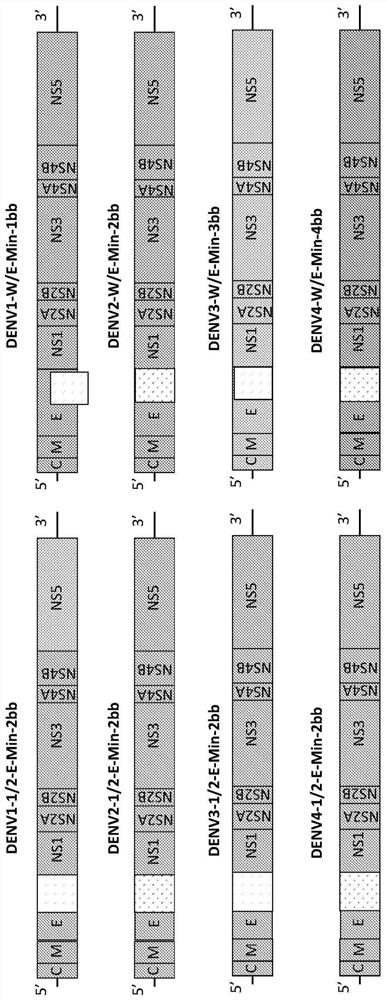Attenuated dengue virus
A dengue virus and protein technology, applied in the direction of viruses, antiviral agents, viruses/bacteriophages, etc., can solve the problems of enhancing DENV vaccine strains and increasing adverse events
- Summary
- Abstract
- Description
- Claims
- Application Information
AI Technical Summary
Problems solved by technology
Method used
Image
Examples
Embodiment 1
[0297] Rapid design and construction of SAVE deoptimized live attenuated dengue vaccine candidates. To select our target sequences, we started with all prM-E sequences of all DENV virus isolates from the past decade and performed an amino acid consensus sequence analysis, available in the NCBI virus variant database. Since the consensus sequence usually never exists as an actual virus, it would be unwise to use it as the basis for our design. We prefer natural viral evolution to tell us what works and what doesn't. Therefore, the consensus sequence of each serotype was then searched against the entire Genbank using the tblastn algorithm to identify the actual genome of the replicating virus most identical to the consensus sequence; we then used this sequence as our target sequence. Furthermore, the target sequence must not be unique in the database (possible sequencing artifacts), in which case we chose the sequence with the next highest identity to the consensus sequence rep...
Embodiment 2
[0299] Leveraging the flexibility of the SAVE platform to create second-generation dengue virus vaccine candidates
[0300] To fine-tune attenuation and immunogenicity, a second-generation dengue virus vaccine candidate was constructed using the SAVE platform ( figure 2 ). Second-generation dengue vaccine candidates leverage the flexibility of the SAVE platform to reduce deoptimized regions from 2014bp (E-min) to 997bp (W-E-Min) or further down to 664bp (W-W-E-Min) while maintaining a homologous backbone The amino acid sequences in are 100% identical.
Embodiment 3
[0302] Growth of a heterologous backbone dengue vaccine candidate in Vero cells under animal component-free conditions
[0303] To optimize production conditions for future cGMP production and test attenuation in vitro, DENV1-4 E-Min was used to infect Vero cells at an MOI of 0.01 under animal component-free Supernatants were titrated daily for multi-step growth curves. DENV2, DENV3 and DENV4 candidates reached titers of 1-2 × 10 5 FFU / mL, while DENV1E-Min titers were ~1 log lower compared to other candidates 10 ( image 3 ).
PUM
| Property | Measurement | Unit |
|---|---|---|
| diameter | aaaaa | aaaaa |
| antibody titer | aaaaa | aaaaa |
Abstract
Description
Claims
Application Information
 Login to View More
Login to View More - R&D
- Intellectual Property
- Life Sciences
- Materials
- Tech Scout
- Unparalleled Data Quality
- Higher Quality Content
- 60% Fewer Hallucinations
Browse by: Latest US Patents, China's latest patents, Technical Efficacy Thesaurus, Application Domain, Technology Topic, Popular Technical Reports.
© 2025 PatSnap. All rights reserved.Legal|Privacy policy|Modern Slavery Act Transparency Statement|Sitemap|About US| Contact US: help@patsnap.com



